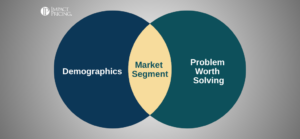Salespeople are often told to “Sell Value.” This is brilliant advice, but what is value? Ask several people in your company and you will get many different answers. More importantly, ask what is the value of our product to this one specific customer and still there is no consensus. Value is hard. It’s confusing. It’s ambiguous. Read on to learn how to take the ambiguity out of pricing.
One large problem is that value has many meanings and is dependent on the situation. What follows are 4 types of value. Your job is to be specific when using the word “value.”
Economic Value:
This is almost exclusively used in B2B and means the amount of profit your product will make the customer. Almost anything you sell into a B2B environment can be built into a business case to show how much your product will make or save your customer.
Consumer Value:
This is like Economic Value only it’s for consumers. Consumers rarely measure value in dollars. Economists coined the term “utility” to describe what consumers maximize. Just like companies maximize profit, consumers maximize their utility.
Customer Perceived Value:
There may be a “true” amount of value, but what really matters is what your buyers believe. One role of sales and marketing is to increase customer perceived value through communications. Selling Value means increasing customer perceived value.
Willingness to Pay:
What is the most a buyer would be willing to pay for your product? That is how much they value it. In a lot of ways this is the most useful of the definitions. The higher the customer perceived value, the more they are willing to pay.
The book, Selling Value: How to Win More Deals at Higher Prices goes into more detail on each of these and defines a couple more meanings of value which are very helpful when selling value.
Which definition resonates most with you?















